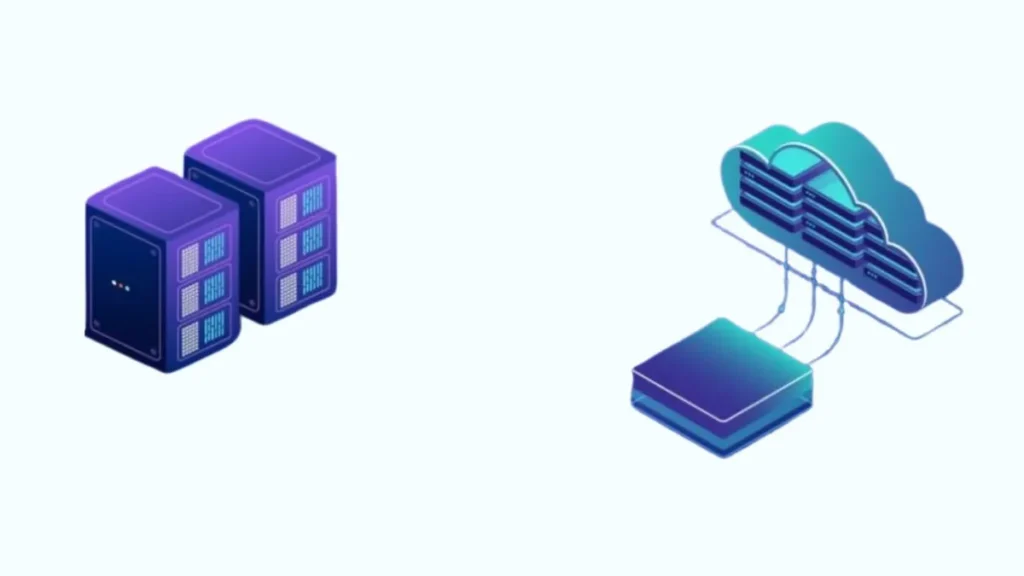In today’s ever-evolving technological landscape, businesses face crucial decisions regarding their IT infrastructure. One of the most fundamental choices is between physical servers and virtual machines (VMs). Each has its advantages and drawbacks, and understanding their differences is not just key, but empowering, to making an informed decision that aligns with your organization’s needs.
What is a Physical Server?
A physical server, in essence, is a self-contained powerhouse dedicated to running server software. It’s a robust amalgamation of hardware components like CPUs, memory, storage, and network interfaces. These servers, often housed in data centers, serve as the backbone for running applications, managing databases, hosting websites, and more. The standout feature of physical servers is their ability to provide exclusive resources to a single tenant or application, ensuring unwavering performance without any interference from other workloads.
Virtual Machine (VM):
A virtual machine is an emulation of a physical computer system. It runs on a host machine and operates as a separate computer with its own operating system (OS), applications, and resources. VMs leverage the underlying physical hardware but are abstracted from it, providing a flexible and efficient way to run multiple isolated environments on a single physical server. This flexibility and efficiency can be intriguing for businesses looking to optimize their IT infrastructure.
What is Virtualization?
Virtualization, a groundbreaking technology, is the key to unlocking the potential of virtual instances of physical hardware. It’s a process that involves using software to mimic the functionality of hardware, thereby creating multiple virtual machines on a single physical server. This ingenious technique significantly enhances resource utilization and flexibility, empowering businesses to run a multitude of applications and operating systems on a single physical machine.
Hypervisor:
A hypervisor, also known as a virtual machine monitor (VMM), is the software layer that enables virtualization. It manages the physical hardware resources and allocates them to the virtual machines.
Hypervisors come in two main types:
Type 1 Hypervisor
Type 1 hypervisors, also known as bare-metal hypervisors, run directly on the physical hardware. They do not require a host operating system, which allows them to offer better performance and efficiency. Examples of Type 1 hypervisors include VMware ESXi, Microsoft Hyper-V, and Citrix XenServer.
Type 2 Hypervisor
Type 2 hypervisors run on top of an existing operating system. They are typically used for development, testing, and personal use rather than in production environments due to their relatively lower performance compared to Type 1 hypervisors. Examples of Type 2 hypervisors include VMware Workstation, Oracle VM VirtualBox, and Parallels Desktop.
What is a Virtual Machine?
A virtual machine is a software-based emulation of a physical computer. It runs an operating system and applications just like a physical machine. Each VM operates independently, with its own virtualized CPU, memory, storage, and network interfaces. Virtual machines can be created, modified, and deleted with ease, providing a highly flexible and scalable computing environment.
Comparison Between Physical Server and Virtual Machine
When comparing physical servers and virtual machines, several factors must be considered to determine which solution best suits your needs.
Performance
Physical servers typically offer superior performance since they provide dedicated resources to a single application or tenant. There is no resource contention or overhead from virtualization layers.
In contrast, VMs may experience performance degradation due to shared resources and hypervisor overhead.
Scalability
Virtual machines excel in scalability. Adding more VMs or reallocating resources can be done swiftly without significant downtime. Physical servers, however, require additional hardware purchases and installations, making scaling a more time-consuming and costly process.
Security
Physical servers provide a high level of security as they are isolated and dedicated to a single workload. VMs, while also secure, depend heavily on the hypervisor’s security features. However, it’s important to note that a vulnerability in the hypervisor could expose multiple VMs to risks. Despite this, with proper security measures in place, virtual machines can be a confident choice for your IT infrastructure.
Business Continuity
VMs offer superior business continuity features, such as easy backups, snapshots, and live migrations. These capabilities allow for minimal downtime and quick recovery from failures. Physical servers, on the other hand, require more complex and time-consuming disaster recovery procedures.
Migration
Migrating workloads between VMs or from a VM to another host is generally straightforward and can often be done with minimal downtime. Physical server migrations are more challenging, often requiring significant planning and extended downtime.
Cost
Virtual machines are generally more cost-effective. They allow for better resource utilization and can reduce the need for additional physical hardware. Physical servers involve higher upfront costs for hardware and ongoing maintenance expenses.
Physical Server vs Virtual Machine: Which to Choose?
The choice between physical servers and virtual machines depends on your specific needs and constraints. If you require high performance, dedicated resources, and enhanced security, a physical server might be the better choice. However, if you need flexibility, scalability, cost-efficiency, and superior business continuity features, virtual machines are likely the better option.
In conclusion, both physical servers and virtual machines have their place in modern IT infrastructure. By understanding their differences and evaluating your business requirements, you can make an informed decision that best supports your organization’s goals.

